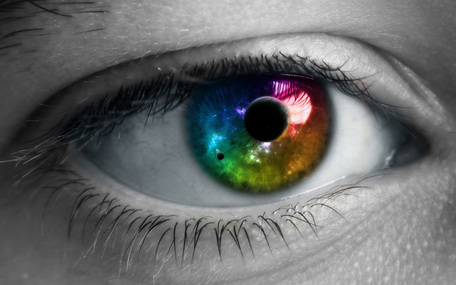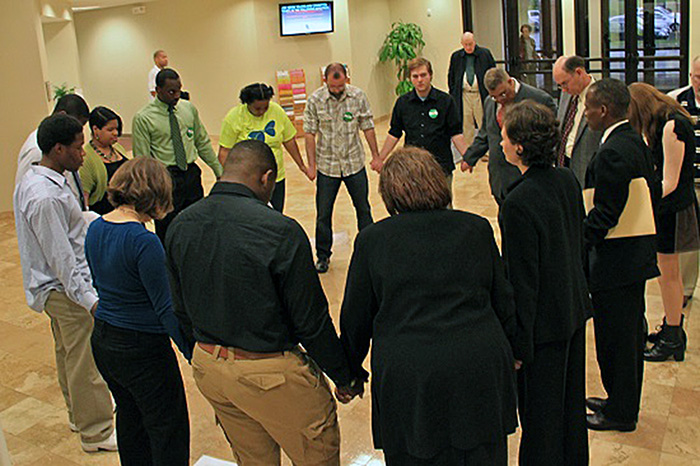RE-VISIONING RELATIONAL MEETINGS
Part 1
Adapted from Story of Power and Power of Story
By Dick Harmon
|
|
PHASE I: First Things
|
Relational Meetings are the core practice for the IAF tradition of organizing. This paper is primarily addressed to veteran leaders and organizers, people who have deep experience with this “habit.” But it may also interest people with other levels and areas of experience—especially young people who already realize the limits of social media in building long-term civil sector power for non-partisan democracy.
Here’s the core of this paper: —We are in the midst of a transformation in our view of both Earth and Cosmos; —we are all grappling with the how and what of that shift, whether we are aware of it or not; —it comes at a time when Earth’s crisis, in its systems, of climate and species, confronts us; —this shift transforms how we view our political economy, our civil sector organizations and communities, and our families and the human person; —a new generation of high-quality relational meetings can become an expanded practice or habit for understanding this shift and transforming our organizing. “Relationals” As Lens During these intentional conversations, we see each other through our lens—through the world-view that we each bring.
That world-view emerges from both sides of our brain. It is both abstract and concrete, both ideas and emotions, both curiosity and anxiety. Our lens develops and matures as we develop and mature; especially as we reflect on the ongoing experience these encounters give us, and particularly from this question: How did her story impact my own story? How am I agitated, stirred, changed by his story? How is my own self-understanding, my own story, altered by that event? As we do more one-to-ones, we become less anxious, more comfortable, more competent, more energized; with practice, like learning to play a musical instrument, we discover a habit, as if our brains were re-wiring as we go. In retrospect, over long periods of good one-to-one work, I’ve observed what appears to be three phases of development in what we can discover through “relationals.” We begin to move from stranger to known-person, from isolation to relationality, from invisible to recognized. |
First Phase
We usually begin with open-ended questions about pressures on family, and then on our local communities of faith, labor, education, or NGO. (I’ll use “local communities” here to describe them all.) As local organizing communities use this process, letting these questions do their work among us, we discover dimensions of both power-among and power-within. The order of these discoveries varies widely, depending on the variety of our experience and where we are in our own developmental tasks. Power-among brings us into the experience of radical relationality. This is the sense of genuine connection, of being-with the other person. In this experience of radical connection, we begin to discern that we are enveloped and suffused by a field of energy, which is bigger than both people in the meeting.
As we continue the conversations, our reflection on them, and pay attention to each other’s public story, we experience each other more deeply. We move beyond the surface of the other person’s story; we discover more of “who the other really is.” This is usually different from what we thought before we talked; different from the “fixed” picture we had of each other, the “box” or stereotype around the other. We begin to move from stranger to known-person, from isolation to relationality, from invisible to recognized. This movement is a surprise, a gift, which grows in us, especially if we reflect immediately after each conversation, and then as well at the end of our day. Some of this movement below the surface can happen in the first conversation; it grows in the second, third and fourth conversations with each person. It takes time—slowing down—and developing the discipline of paying real attention, both to the other, and to your own response. It takes going with your curiosity, and having questions and openness ready for each intentional conversation. In this first phase of relational work, three significant outcomes often emerge: First, we begin to see the other person’s public story embodied in her or his face and body language; and through that embodiment, our imagination goes to work and helps us to see the great stages and streams of historical drama which held the other person’s family, going back three and four generations, maybe longer: Wars, economic booms and busts, migrations, politics and culture, bearing in on each generation, causing great suffering, forcing each group to develop coping strategies, lifting up resilient heroines and heroes, victims and scoundrels, each person and generation contributing to the cultural DNA in the person sitting with you. Through the story of this person, we see the drama of human history—what theologians sometimes call “the world.” I call this our political economy, as both story and system.
Simultaneously, we experience more understanding of the impact of our political economy upon our own story. Each story is slightly altering the other, at several levels. Each story becomes larger and deeper; it takes on more meaning for each person. Often, we are each moved to ask remaining elders in our own family what happened to that aunt or those grandparents, and why: Please consider asking before it’s too late. |




